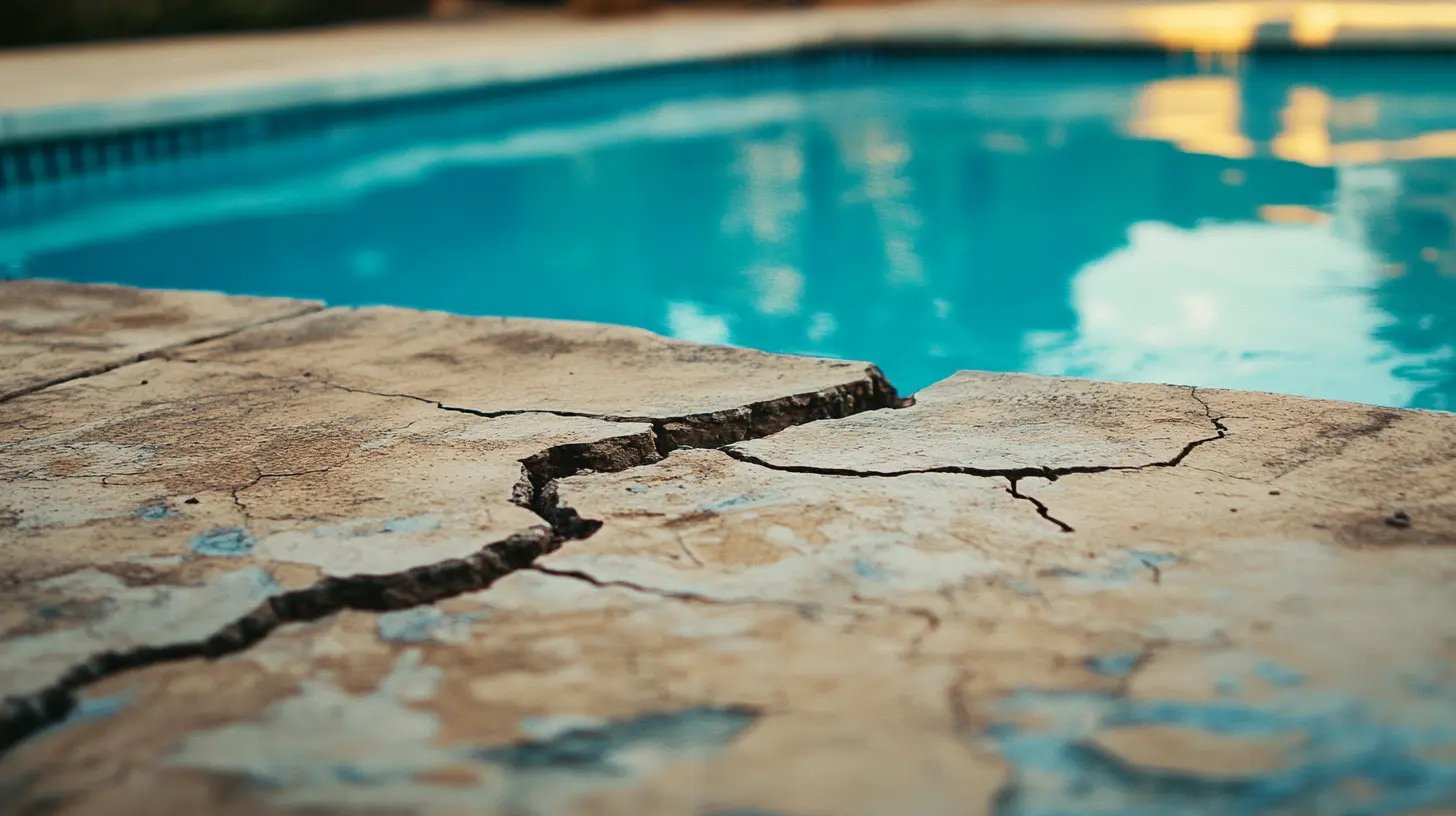Blogs
Top Pool Maintenance Tips for Every Season

Understanding Pool Cracks and When to Repair Them
A small crack in your pool might not seem like a big deal—but left unaddressed, it can lead to major structural damage, water loss, and even safety issues. If you’ve spotted a crack in your pool’s plaster, tile, or concrete shell, knowing what type of crack it is and how to respond can save you from costly repairs in the future.
Types of Pool Cracks
Not all pool cracks are created equal. Some are purely cosmetic, while others signal a more serious issue:
- Surface/Plaster Cracks: Thin, spiderweb-like cracks often seen on the plaster surface. These are usually cosmetic but should still be monitored.
- Structural Cracks: These go deeper and often extend through the concrete or gunite shell. These can lead to leaks and must be professionally repaired.
- Tile Cracks: Cracks in pool tiles are typically caused by shifting, poor installation, or underlying structural issues.
What Causes Pool Cracks?
Several factors can contribute to cracks in your pool, including:
- Soil Movement: Expansive soils in Texas, for example, can shift dramatically during dry or rainy seasons, putting pressure on the pool structure.
- Improper Engineering: If your pool wasn’t constructed with proper reinforcement or concrete mix, it’s more prone to cracking.
- Aging Materials: Over time, even well-built pools experience wear and tear, especially if maintenance is delayed.
- Temperature Changes: Extreme heat followed by sudden cold spells can cause expansion and contraction in the pool materials.
When Should You Worry About a Pool Crack?
Surface-level cracks may not pose an immediate threat, but deeper or widening cracks should be inspected by a professional. Key signs you need pool crack repair include:
- Consistent Water Loss
- Visible Structural Shifts
- Bulging Pool Walls or Floors
- Recurring Algae Growth in Cracks
How Cracks Are Repaired
At A&N Pool Solutions, we assess the type and severity of the crack before choosing the right method:
- For Surface Cracks: We use patching and resurfacing techniques to restore a smooth, uniform finish.
- For Structural Cracks: We perform crack injections using high-strength epoxy, followed by reinforcement to prevent future movement.
- For Recurrent Cracking: We evaluate soil stability and may recommend additional drainage or structural support solutions.




